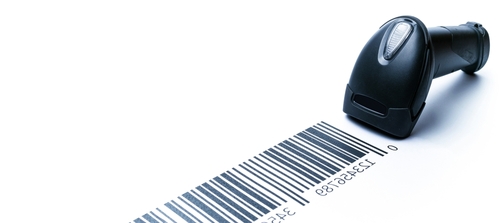What is inventory management?
Inventory management is the systematic process of tracking and controlling a business’s assets, such as raw materials, finished products, and stock items. It involves the use of various systems, methods, and tools to ensure efficient and accurate inventory tracking. One such tool that has gained widespread popularity is the barcode system for inventory, which makes use of barcodes and barcode scanners to manage and monitor inventory levels effectively.
For businesses of all sizes, including large warehouse operations and small enterprises, inventory management is a critical aspect of their daily operations. Proper inventory management can help optimize storage space, reduce holding costs, prevent stockouts, and ensure a smooth supply chain.
What is the first step of inventory management?
The first step of inventory management is to establish a well-organized system for tracking your inventory. This includes creating an inventory database, categorizing items, and assigning unique identification codes, such as SKU numbers. Implementing an inventory barcode system can be an effective way to streamline this process.
Whether you operate a large warehouse or a small business, a comprehensive inventory management system is essential for maintaining accurate inventory records and avoiding common pitfalls, such as stock discrepancies or inefficient stock handling. By using a barcode system for inventory, businesses can track their inventory with greater accuracy and ease, leading to more informed decision-making and better overall performance.
Why should your business use barcodes for inventory management?
Utilizing barcodes for inventory management offers several benefits that can significantly improve your business operations, regardless of size. Barcodes save time by automating the data entry process, reducing the risk of human error, and increasing overall accuracy. This helps businesses stay organized and up to date with their inventory capacity, making it easier to manage stock levels, identify trends, and avoid stockouts or overstock situations.
For both small businesses and large warehouse operations, a barcode inventory system streamlines the inventory management process, enabling faster and more efficient stock handling. By implementing a barcode system, you can gain real-time visibility into your inventory, allowing for better decision-making and enhanced overall operational efficiency.
What types of barcodes are there and how do you identify them?
There are several types of barcodes used in inventory management, each with its own unique characteristics and applications. Some of the most common barcode types include:
- Universal Product Codes (UPCs): These are typically used on consumer goods and consist of a 12-digit number that uniquely identifies a product and its manufacturer.
- Stock Keeping Units (SKUs): These alphanumeric codes are created by individual businesses to track and manage their own inventory. SKUs can be customized to include information such as product type, size, color, and more.
- 1D Barcodes: Also known as linear barcodes, these codes represent data using a series of parallel lines and spaces of varying widths. Examples of 1D barcodes include UPC and EAN codes.
- 2D Barcodes: These barcodes store data in both horizontal and vertical directions, allowing them to hold more information than 1D barcodes. QR codes and Data Matrix codes are examples of 2D barcodes.
- GS1 Barcodes: This is a global standard for barcodes that includes various formats such as EAN, UPC, and ITF-14. GS1 barcodes are used to uniquely identify products, locations, and assets within a global supply chain.
Each barcode type serves a specific purpose and offers different benefits depending on the requirements of the inventory management system. Understanding the differences between these barcode types can help businesses choose the most suitable option for their needs.
How to implement a barcode system
Implementing a barcode system for inventory management can greatly enhance the efficiency and accuracy of your business operations, whether you’re a small business or a larger warehouse. The process of setting up a barcode system involves several key steps.
Evaluate and choose the right barcode system:
Before implementing a barcode system, it’s essential to evaluate your specific business needs and choose the right type of barcode system that best fits those requirements. Consider factors such as how you manufacture, the complexity of your products, and the level of detail required for tracking your inventory. For example: Mar-Kov’s inventory management system is custom built for batch manufacturers.
Procure and install necessary barcoding hardware and software:
Once you’ve chosen the appropriate barcode system, it’s time to procure the necessary hardware and software. This typically includes barcode scanners, printers, labels, and inventory management software. Ensure that the hardware and software are compatible with the chosen barcode type and can be seamlessly integrated into your existing business processes.
Train your staff:
To ensure the successful implementation of your barcode system, it’s essential to train your staff on its proper usage. This includes educating them on the fundamentals of the barcode system, how to use the barcode scanners, and how to handle any issues that may arise. Providing comprehensive training will help prevent errors and ensure a smooth transition to the new system.
Perform an inventory count and label your inventory:
Before fully implementing the barcode system, perform a thorough inventory count to ensure accurate records. This count should include verifying the quantities and details of each item in your inventory. Once the count is complete, generate and apply barcode labels to all items in your inventory. This step will help ensure that your barcode system is functioning correctly and that your inventory records are up to date.
Implement, monitor, and adjust:
After setting up the barcode system and training your staff, it’s time to implement the system and monitor its performance. Keep a close eye on the accuracy of inventory records, the efficiency of the stock handling process, and the overall effectiveness of the system. Regularly review and adjust the barcode system as needed to address any issues and optimize its performance.
By following these steps, both small businesses and larger warehouses can successfully implement a barcode system for inventory management, leading to increased efficiency, better organization, and improved decision-making.
Take the first step towards modernizing your inventory management by booking a demo with Mar-Kov. Explore how a barcode inventory system can improve your batch manufacturing and help you scale up.




